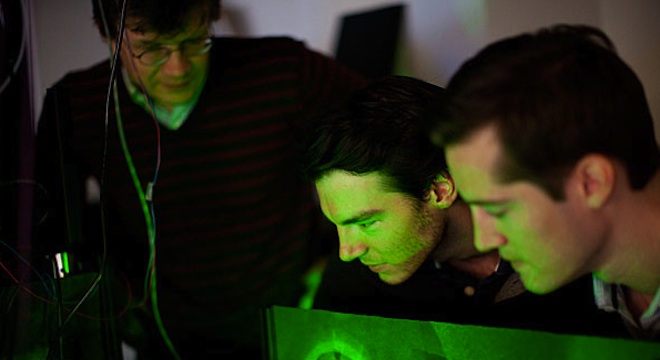A practical quantum computer — that is, a machine that relies on individual atoms and molecules to store information in multiple states, performing far more calculations per second than the most powerful supercomputers in action now — has been a goal of scientists since it was first theorized in the 1980s.
Now, scientists at Harvard University have taken an enormous step toward that end, successfully demonstrating a new method of storing and accessing information using quantum bits — or qubits — at room temperature.
“In our case we have now demonstrated that individual quantum memories can be initialized, stored, manipulated and read out with high fidelity,” explained Peter Maurer, one of the Harvard physicists who developed the new method, in an email to TPM.
Qubits are differentiated from standard bits — the smallest unit of data storage in a common computer — due to the fact that they are able to be simultaneously “0” and “1” at the same time, a state referred to as “superposition.” Standard bits toggle between either “0” or “1” but cannot be in-between or both at the same time.
Being able to access information and perform calculations using data stored in multiple states would allow quantum computers to perform operations in parallel that a standard computer would have to perform in a sequence, opening up the possibility of exponentially more powerful, faster computers.
Specifically, the Harvard researchers managed to store arbitrary data at a temperature of of 73.4 degrees Fahrenheit for a time period of 2.2 seconds before the qubits lost their mechanical character.
“Interactions between the quantum memory and the environment destroys the stored information,” Maurer elaborated.
While that may not seem like a long time, it’s almost six times as long as previous quantum computing systems. Most quantum computers also require a vacuum to operate, necessitating ultra-cool temperatures of absolute zero, or -459.67 degrees Fahrenheit.
“All the experiments were done in ambient conditions, meaning that the experiments were at room temperature and we did not require a vacuum,” Maurer pointed out.
The research team achieved the remarkable breakthrough by creating the qubits out of tiny impurities found in ultra-pure, laboratory synthesized diamonds, created by UK supermaterials company Element Six.
The impurities, called “nitrogen vacancy centers,” are similar to atoms in that they each contain spinning centers, which can be controlled with laser pulses.
Further, the two-second storage time is just the beginning of what the team envisions can be done in terms of creating a practical quantum computer.
“We believe that when using stronger laser pulses and purer material storage times of hours [of storage] might be within reach,” said Maurer.
Some major challenges still remain though, including linking the individual pieces of data with each other across qubits. Maurer said that many researchers, including he and his colleagues, were actively working on finding a way to accomplish that next requirement.
When they do, the nature of computing itself will change quite dramatically, if projections are any indications of what capabilities would be offered by quantum computers.
“It has been shown that using information stored in a quantum bit is secure against any type of wiretapping,” Maurer noted.
Maurer and his colleagues published their findings in a paper in the journal Science in June.






